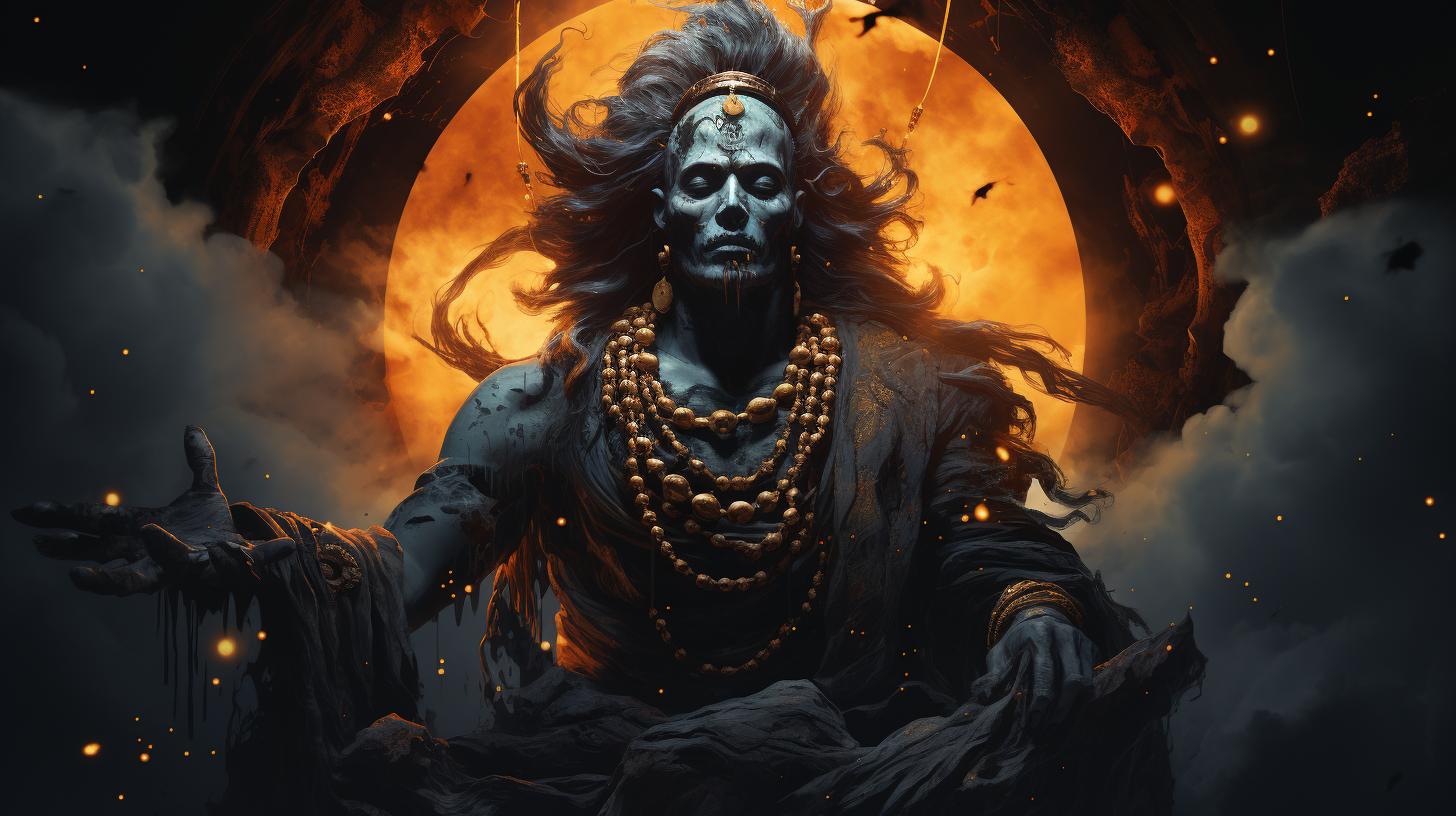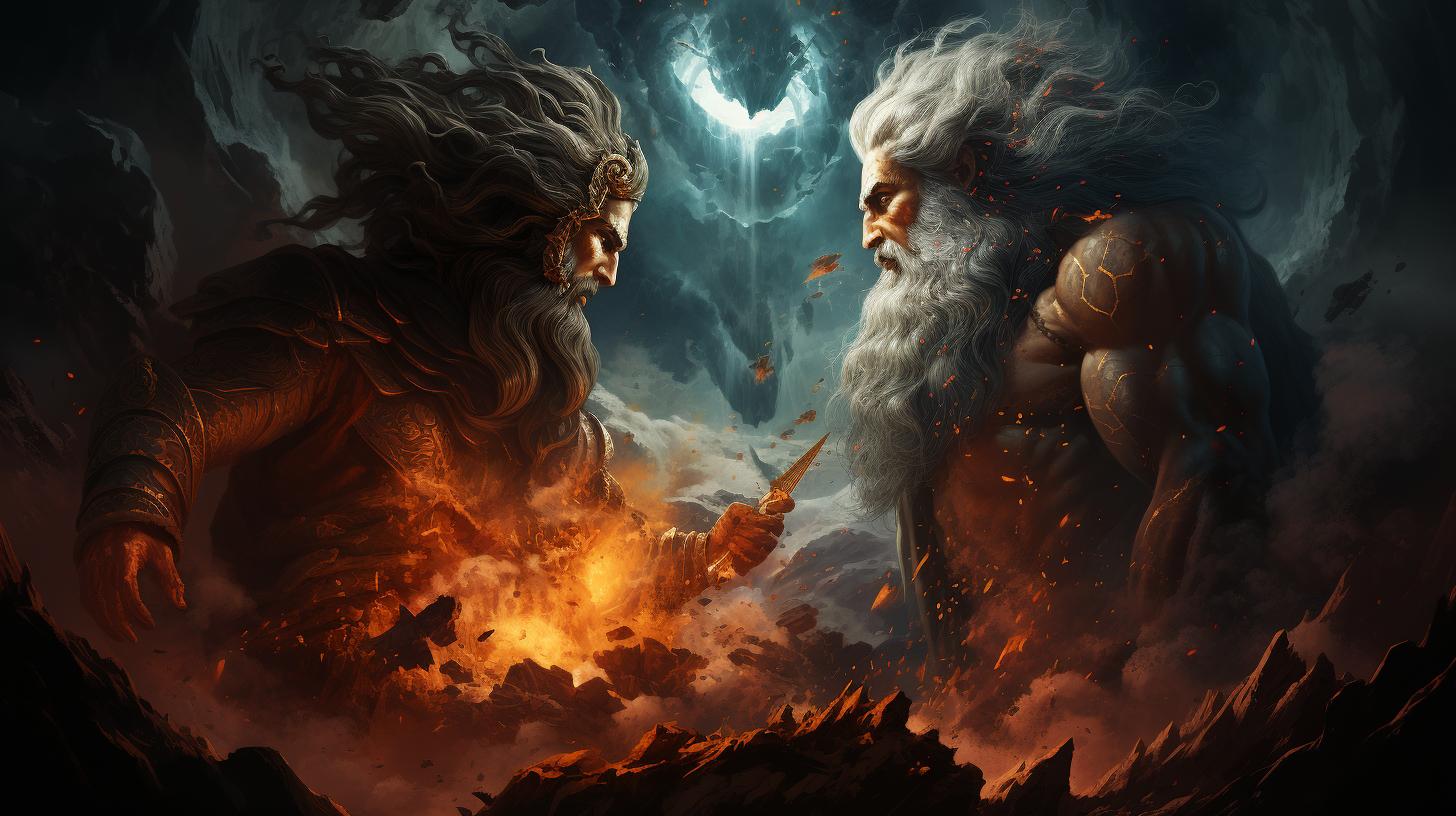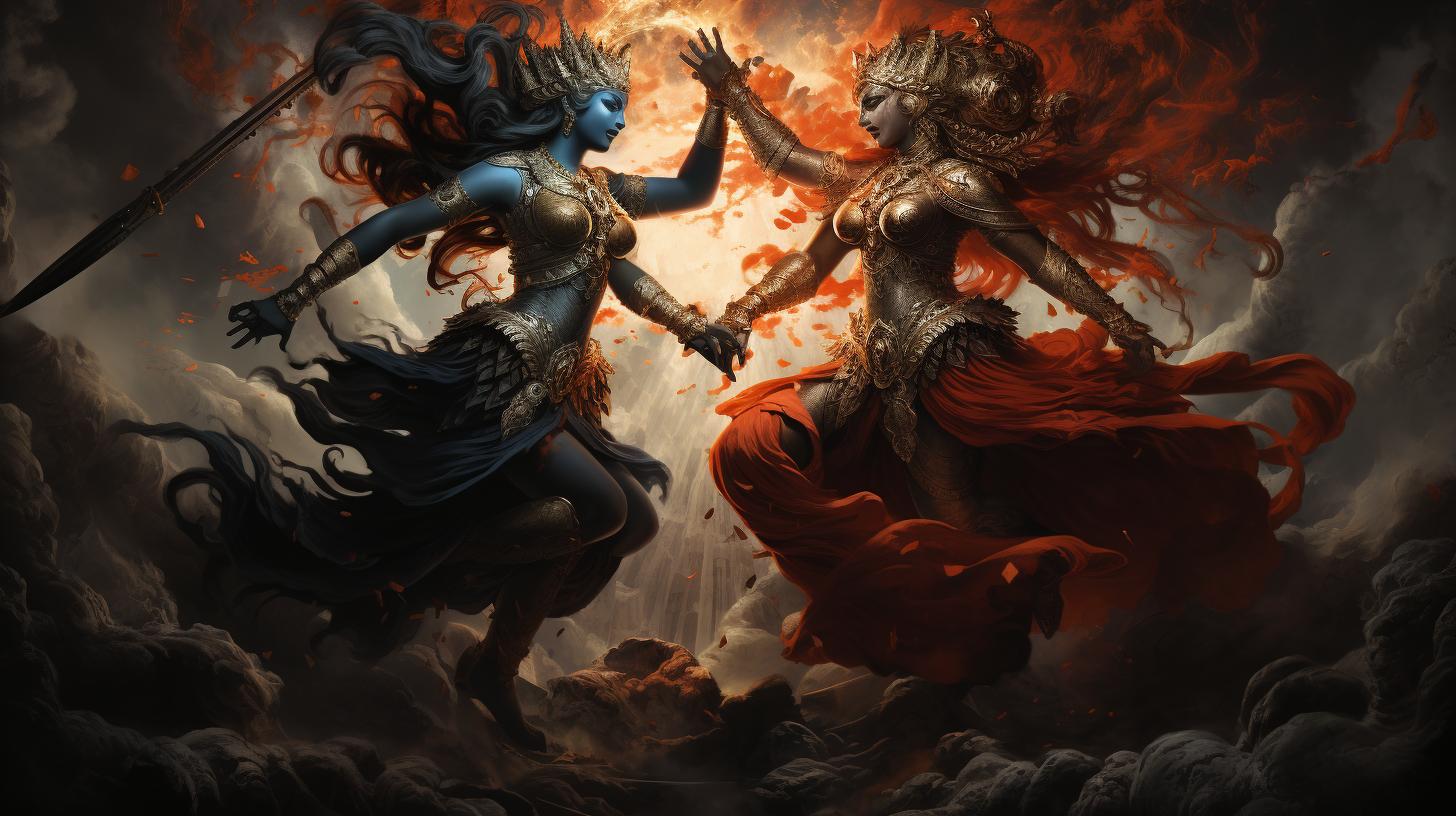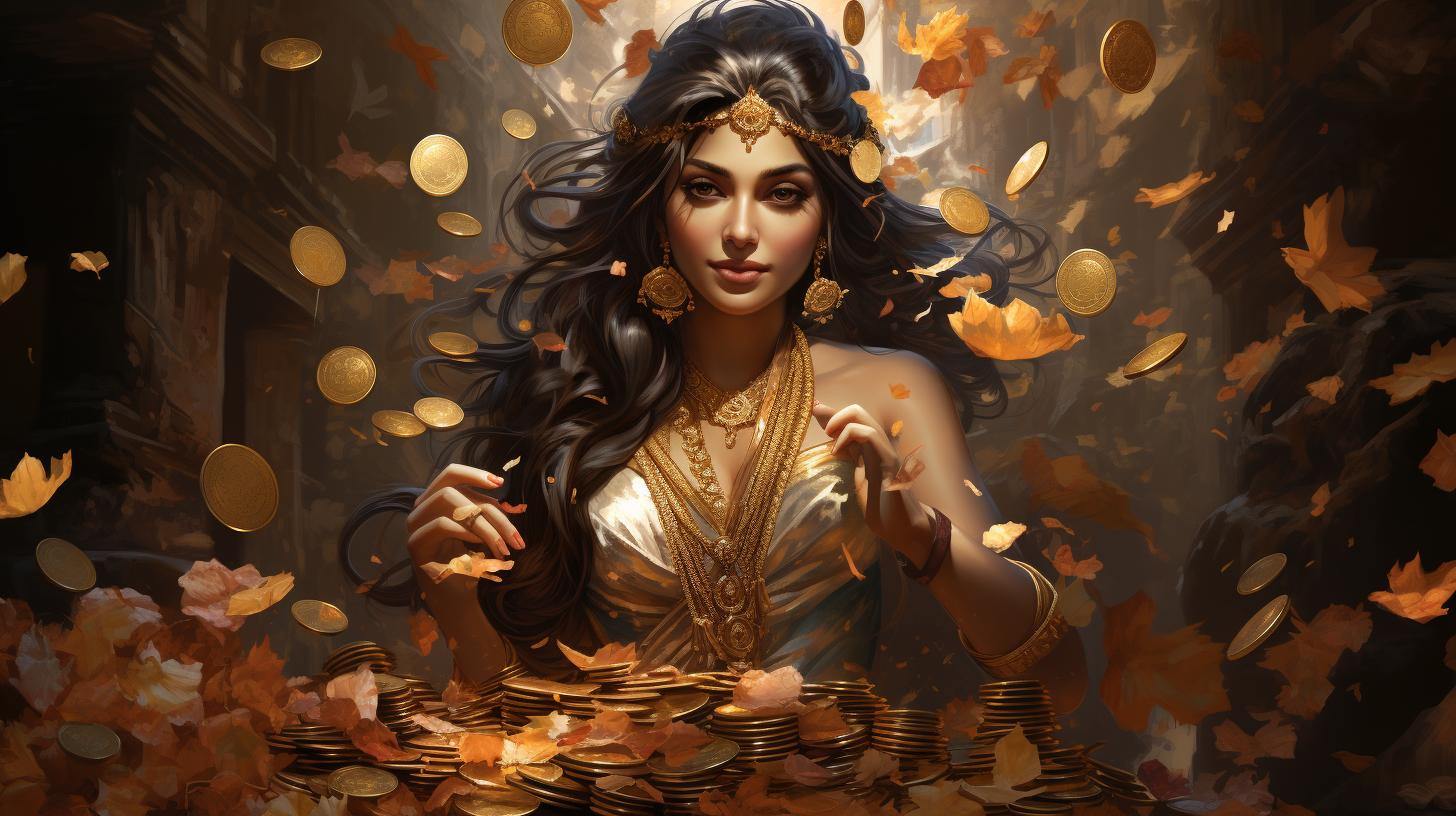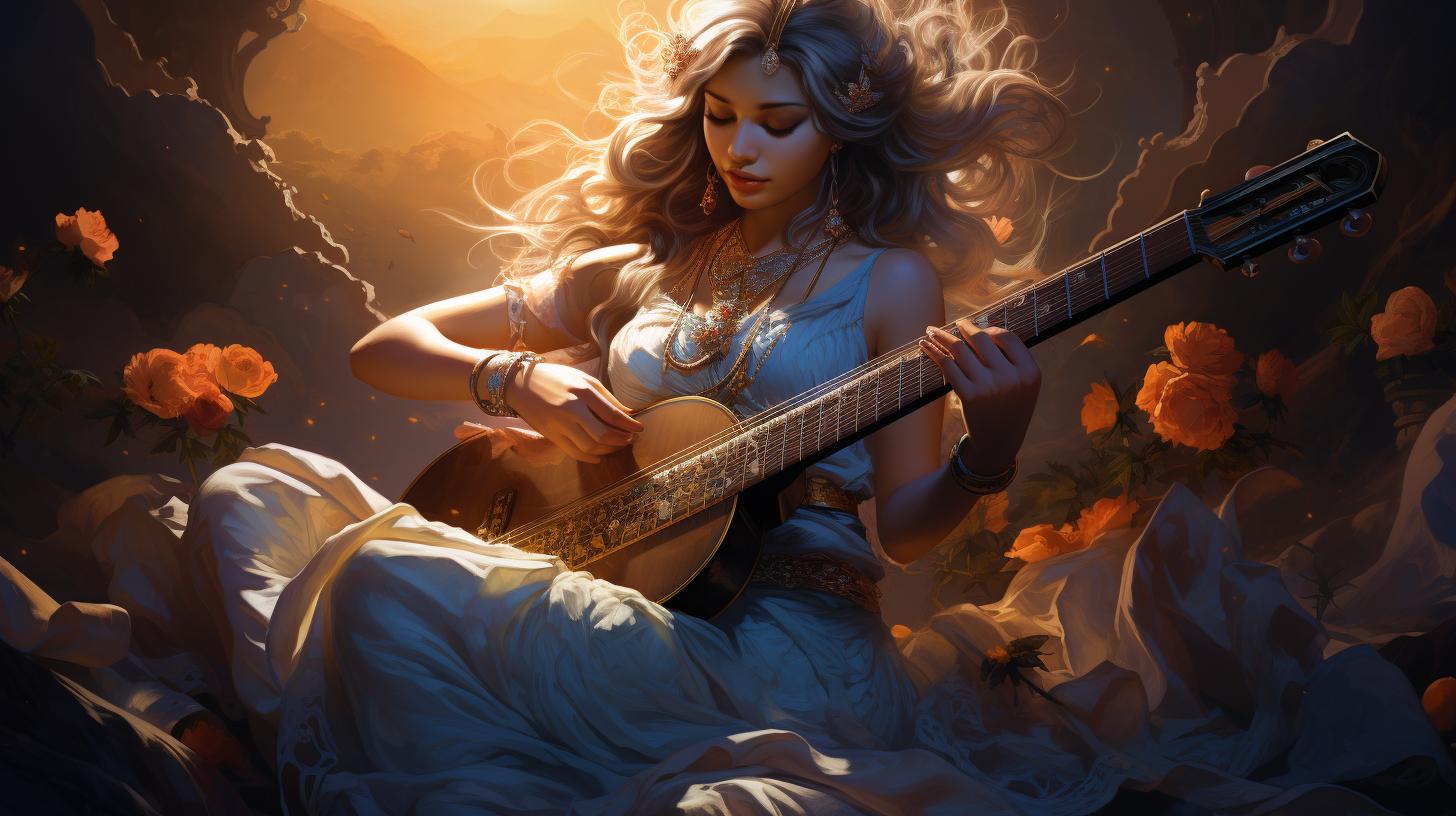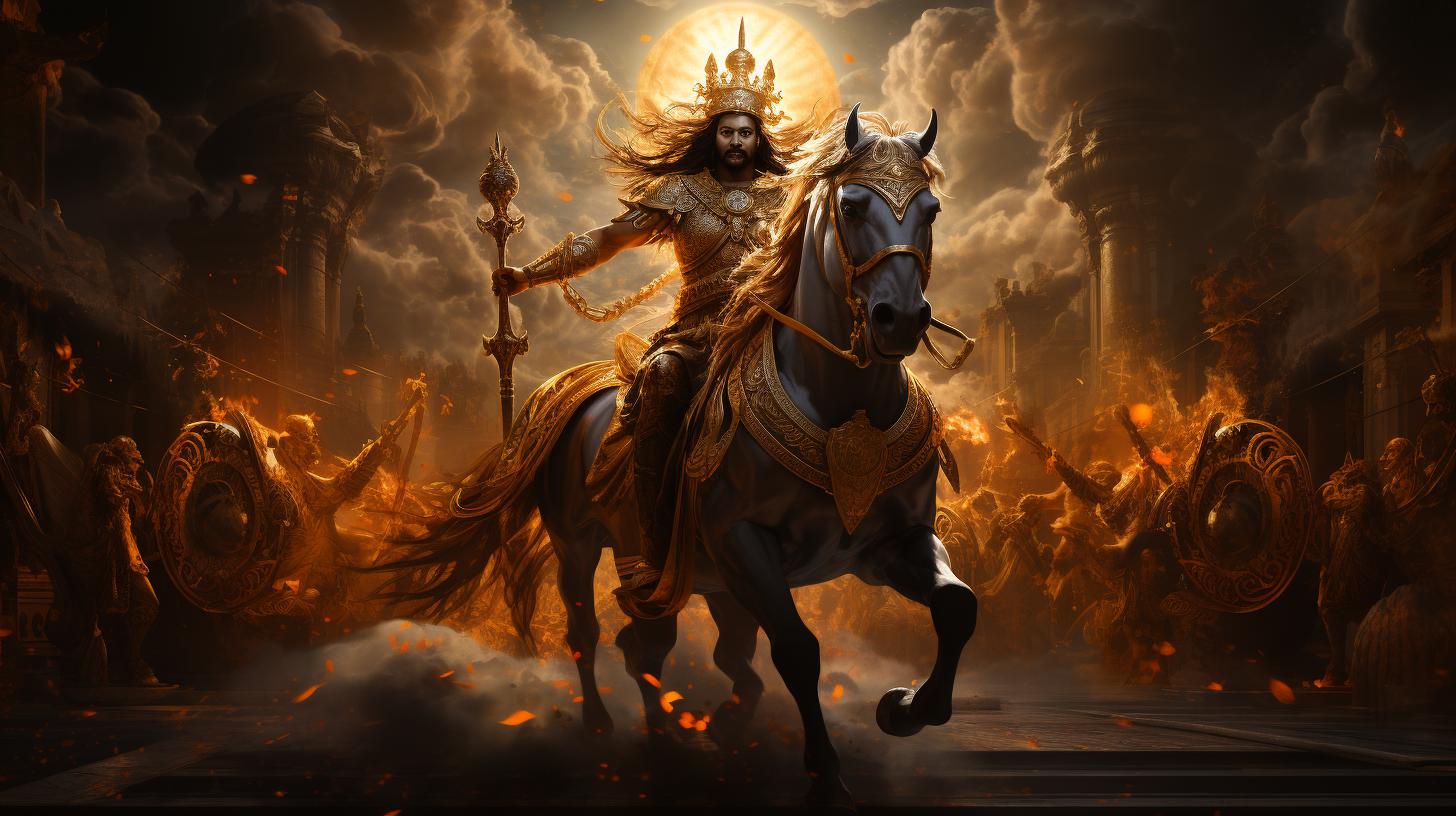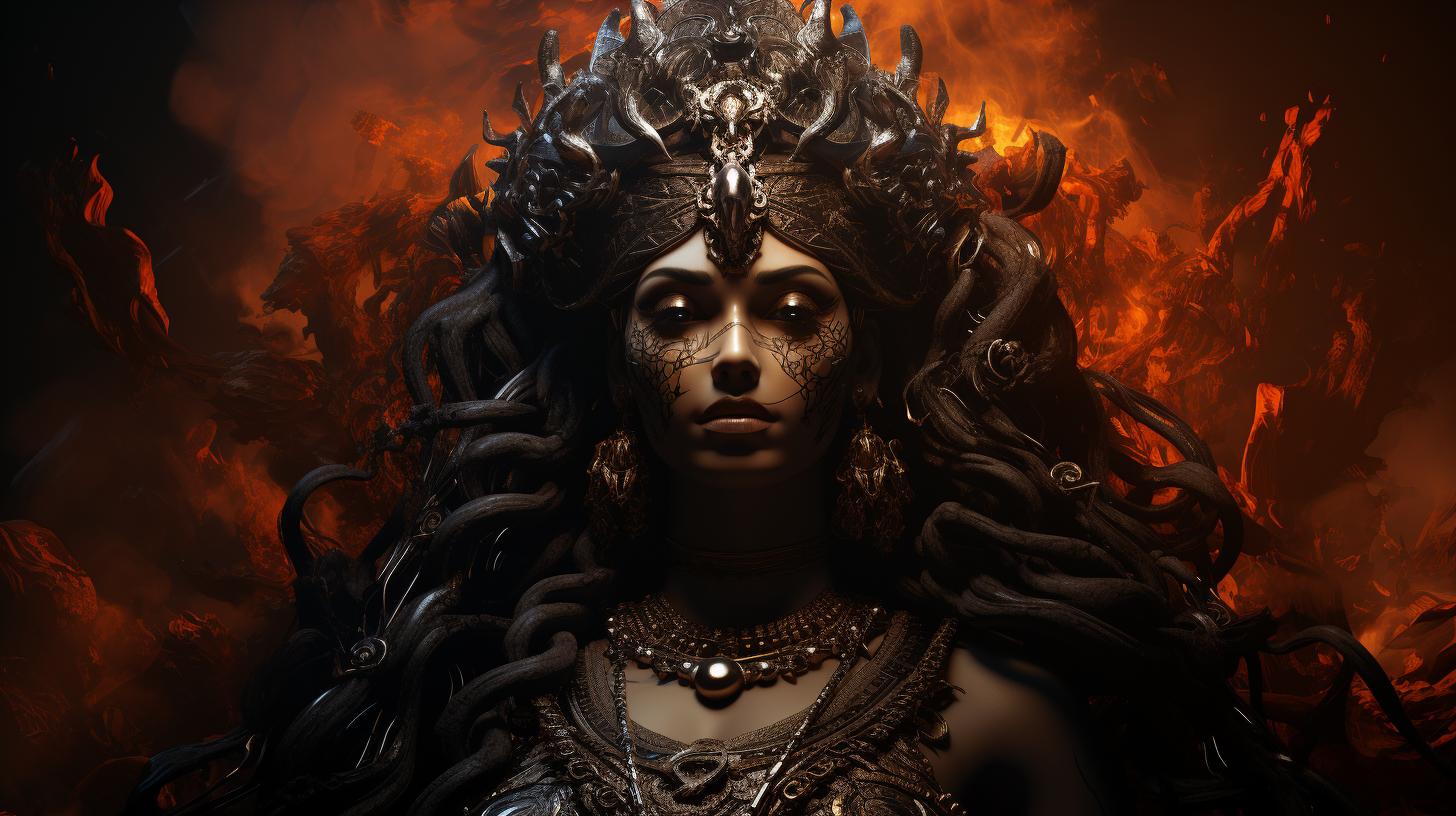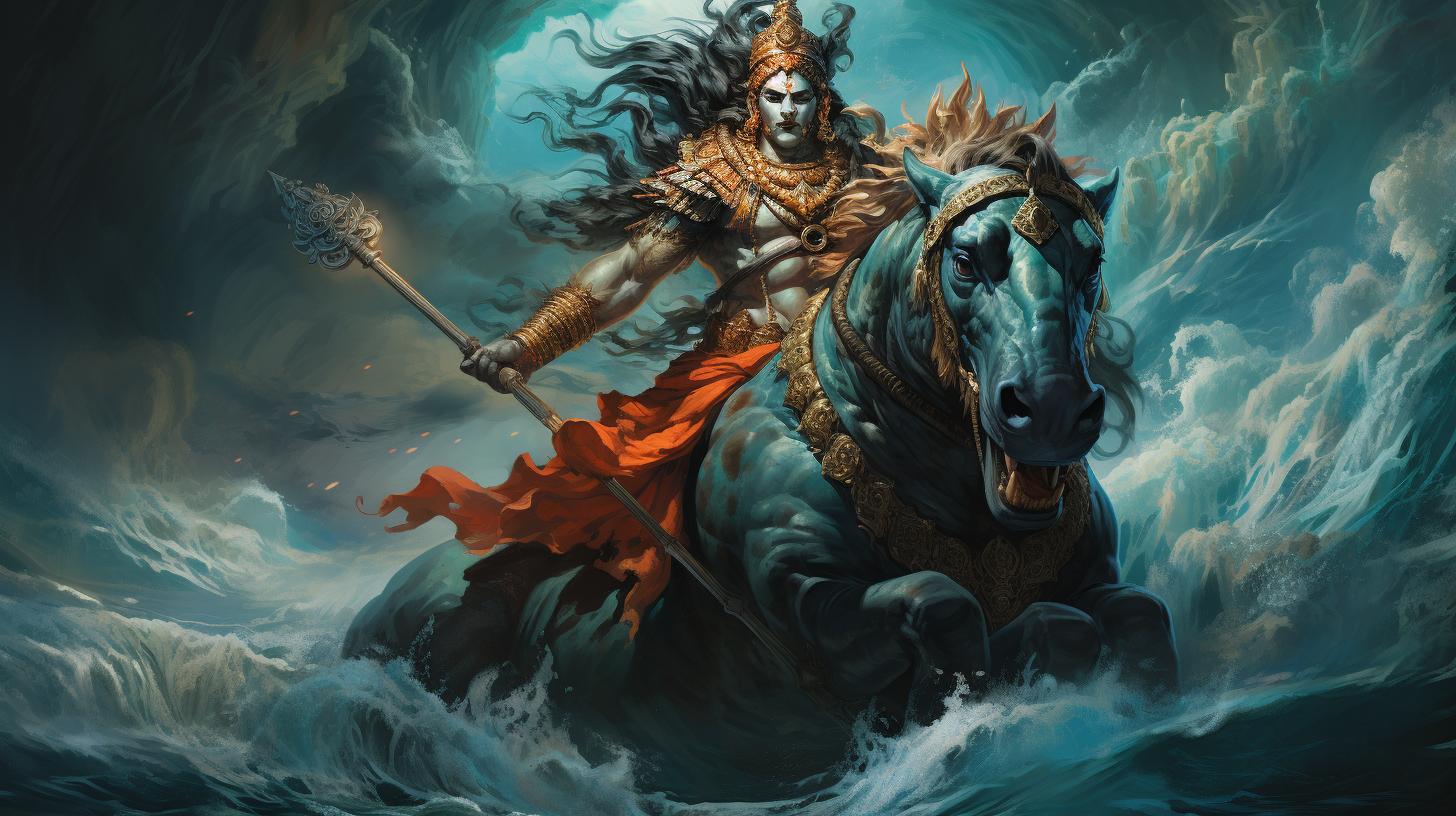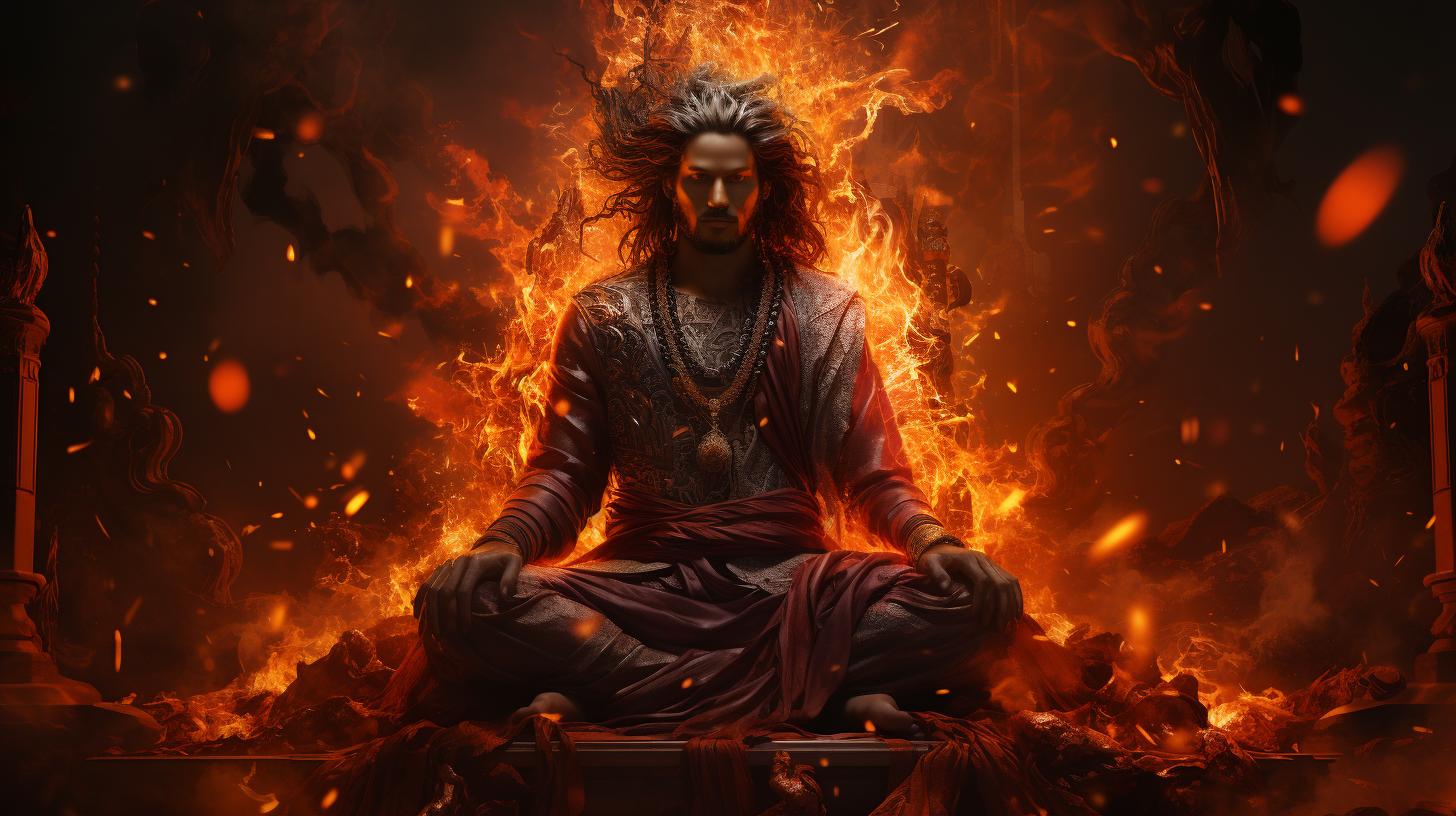Indian God of Death Yama: An Exploration of Hindu and Buddhist Beliefs
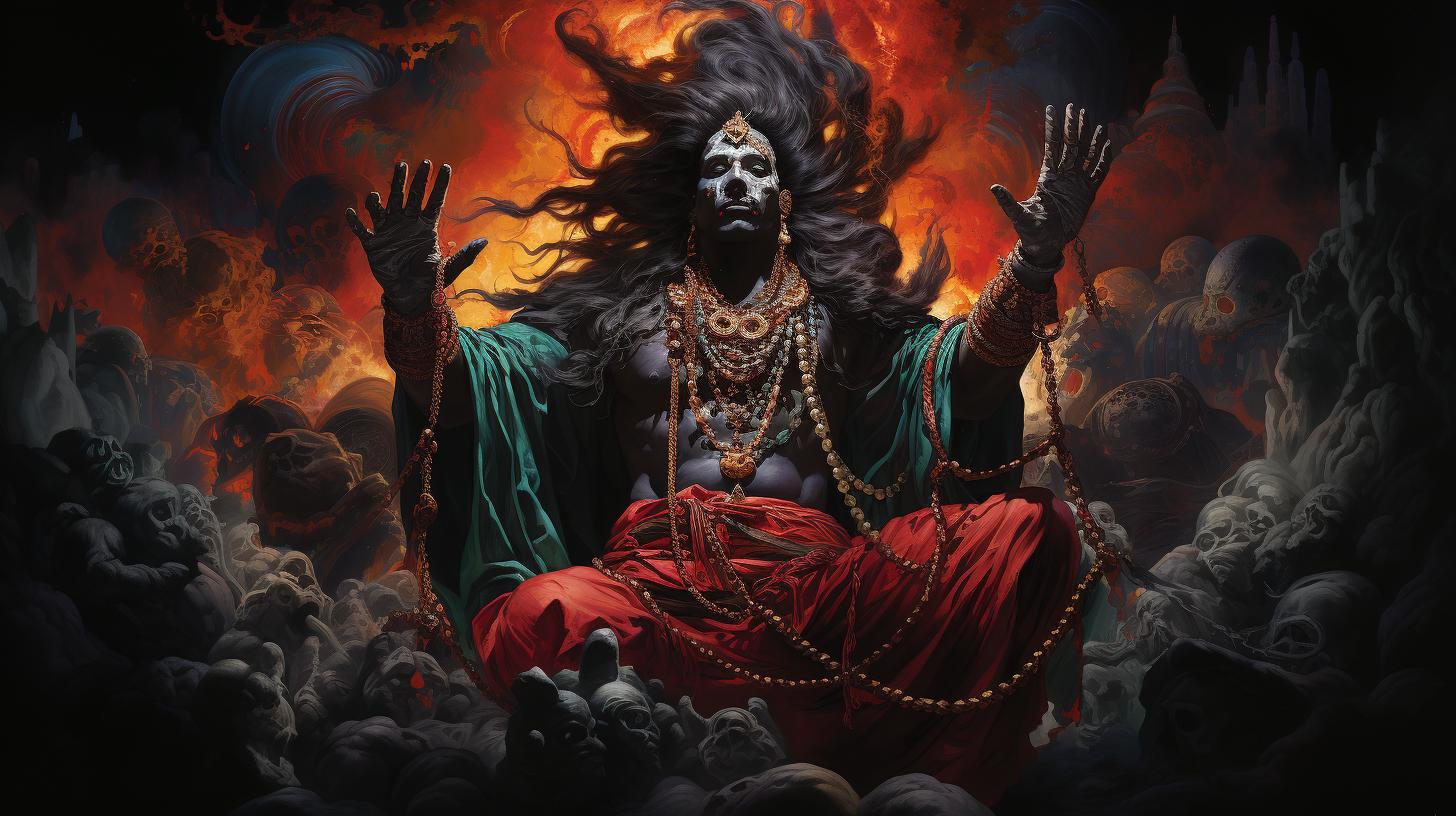
Yama, the Indian god of death, holds a significant role in both Hinduism and Buddhism. Represented with dark complexion, riding a buffalo, carrying a rope and a mace, and accompanied by peculiar beings like four-eyed dogs, a crow, and a dove, Yama judges the souls of the deceased based on their actions in life.
His judgment determines their fate, whether it be in the realm of ancestors, hell, or the opportunity for reincarnation on Earth. Yama’s diverse representations can be found in temples and cultural texts, though variations may exist across different religious traditions, such as Sikhism.
Explore the intriguing mythology and influence surrounding Yama, shedding light on the concepts of death and justice.
Overview of Yama: The Indian God of Death
Yama, the Indian god of death, holds significant importance in both Hinduism and Buddhism. He is revered and worshipped as the deity responsible for ensuring justice in the realm of life and death.
Yama’s portrayal varies across different cultures, but he is commonly depicted as a dark-skinned man riding a buffalo, carrying a rope and a mace, and accompanied by unique creatures such as four-eyed dogs, a crow, and a dove.
In Hinduism, Yama plays a crucial role in judging the souls of the deceased and determining their ultimate fate based on their actions during their lifetime. He has the authority to send souls to the realm of ancestors, to hell, or to allow them to be reincarnated on Earth.
Yama’s representations can be found in various religious texts and cultural artworks, showcasing his influence and significance in Hindu beliefs.
Buddhism, on the other hand, incorporates Yama into its own beliefs, adapting his role and interpretation.
In Buddhist philosophy, Yama represents the impermanence and ever-presence of death, reminding practitioners of the transient nature of life and the importance of spiritual awakening. Yama’s association with justice and karma is also emphasized in Buddhism, aligning with the belief in cause and effect.
Yama’s mythology and stories can be found in several religious scriptures, including the Vedas and Hindu epics like the Mahabharata and the Puranas. His importance extends beyond ancient texts, as Yama’s influence can still be seen in contemporary Indian literature, folk tales, and modern popular culture.
The representations of Yama vary within Hindu traditions, but he is often associated with other gods such as Shiva, Indra, and Dharma. Symbolically, Yama’s imagery represents death, justice, and the grappling with moral dilemmas.
Temples dedicated to Yama can be found in India, serving as places of worship and reverence.
Understanding the role of Yama in Hinduism and Buddhism provides insight into the concepts of death, justice, and the cycle of life.
Exploring his varied depictions and associations enriches our understanding of Indian culture, spirituality, and religious thought.
Yama in Hinduism: Role and Significance
Yama plays a crucial role in Hinduism, embodying both fear and justice in the realm of death. As the judge of souls, Yama’s appearance and attributes hold symbolic significance in Hindu mythology.
Yama’s Appearance and Attributes
Yama is often depicted as a dark-skinned deity riding a buffalo, carrying a rope and a mace. This portrayal represents his power and authority in ruling over life and death. Surrounding him are unusual creatures, such as four-eyed dogs, a crow, and a dove, which symbolize different aspects of the afterlife and the soul’s journey.
Yama’s Role as the Judge of Souls
One of Yama’s primary responsibilities is to pass judgment on the souls of the deceased. With his divine insight, Yama assesses their actions during their earthly lives and determines their moral worth.
This judgment is based on the concept of dharma, the adherence to righteous duties and actions.
Yama’s Role in Determining the Fate of Souls
Once Yama has judged the souls, he determines their subsequent fate. The destinies of the souls vary, depending on the virtuousness or transgressions committed during their lifetime. Yama has the power to send souls to the realm of ancestors, guide them towards rebirth on Earth, or condemn them to the torments of hell, reflecting the idea of karma and the consequences of one’s actions.
Yama in Buddhism: Adaptation and Interpretation
Incorporation of Yama in Buddhist Beliefs
In Buddhism, Yama is an adapted figure from Hindu mythology with distinct interpretations. While Buddhism rejects the notion of a permanent self and the existence of gods, Yama is often assimilated into Buddhist beliefs as a metaphorical representation of the impermanence and transience of life.
The incorporation of Yama allows Buddhists to explore the concept of death and its significance in the cycle of samsara.
Yama’s Role in Buddhist Philosophy
In Buddhist philosophy, Yama symbolizes the law of cause and effect, known as karma, which governs the cycle of rebirth. Yama is seen as a reminder of the consequences of one’s actions in life, advocating the importance of moral conduct and ethical behavior.
Buddhists view Yama as a transformative force, guiding individuals to attain enlightenment and break free from the cycle of suffering.
Key points:
- Yama in Buddhism represents impermanence and the transient nature of life.
- His incorporation serves as a metaphorical expression of the concept of death in Buddhist beliefs.
- Yama symbolizes the law of cause and effect (karma) and emphasizes the importance of ethical behavior.
- Buddhists view Yama as a transformative force guiding individuals towards enlightenment.
Representations of Yama in Different Cultures
Yama, the Indian god of death, has been depicted in various ways across different cultures, particularly in Hindu and Buddhist art.
These representations offer unique insights into the diverse interpretations and symbolism associated with Yama. Let’s explore the depictions of Yama in both Hindu and Buddhist art and delve into the cultural variations surrounding his portrayal.
Yama’s Depictions in Hindu and Buddhist Art
In Hindu art, Yama is often depicted as a fearsome deity, with a dark complexion and a stern expression on his face. He is portrayed riding a buffalo, carrying a rope and a mace, and surrounded by his animal companions such as four-eyed dogs, a crow, and a dove.
These artistic depictions emphasize his power and authority as the judge of souls.
Buddhist art incorporates Yama into its iconography with some variations. While the basic portrayal remains similar to Hindu art, Buddhist representations of Yama often highlight his role within Buddhist philosophy.
These artworks symbolize the impermanence and transient nature of life, reminding individuals of the need to seek enlightenment and escape the cycle of death and rebirth.
Cultural Variations in Depicting Yama
Despite the shared core elements, cultural variations in depicting Yama can be observed.
In Southeast Asian cultures, for example, Yama is portrayed with a more benevolent appearance, adorned with jewelry and a more compassionate expression. This depiction reflects the cultural influences and regional interpretations of Yama.
Furthermore, Yama’s representation can also vary within different Indian regions. In some depictions from South India, Yama is depicted with a fearsome appearance, while in North India, he may appear in a more majestic and regal form.
These diverse portrayals speak to the regional and cultural nuances present within Indian art and belief systems.
- Regional variations in Yama’s appearance
- Cultural influences on Yama’s depiction
- Southeast Asian variations of Yama’s portrayal
- Differences in Yama’s representation across Indian regions
Overall, the representations of Yama in different cultures reflect the intricate relationship between art, culture, and religious beliefs.
These varied depictions provide a rich tapestry of interpretations and artistic expressions associated with the Indian god of death.
Yama in Religious Texts and Mythology
Yama, the Indian god of death, holds significant importance in religious texts and mythology. He is prominently mentioned in the ancient scriptures known as the Vedas, which are considered the oldest religious texts in Hinduism.
Within the Vedas, Yama is depicted as a divine figure associated with death and justice.
Yama’s Mention in the Vedas
In the Vedas, Yama is often referred to as the first mortal who ventured into the realm of the dead, becoming the ruler and judge of souls. He is portrayed as maintaining order and ensuring justice is served in the afterlife.
Yama’s role in the Vedas reflects the early origins of his association with death and his significance in the cosmic cycle.
Yama’s Stories in Hindu Epics and Puranas
In addition to the Vedas, Yama’s stories and mythology continue to flourish in Hindu epics and Puranas, which are ancient narratives and scriptures. These texts further elaborate on Yama’s role as the god of death and justice, presenting various tales and allegories surrounding his interactions with gods, humans, and other divine beings.
One well-known story is that of Yama and the young boy Nachiketa, featured in the Katha Upanishad. This narrative explores the concept of life after death and the teachings of Yama on the nature of the soul and the path to liberation.
Moreover, Yama’s importance is also illustrated in other Hindu epics like the Mahabharata and the Ramayana, where he plays crucial roles in the stories of Pandavas and Lord Rama respectively.
These tales depict Yama’s divine attributes, his interactions with mortals, and shed light on the consequences of one’s actions in life.
Overall, the portrayal of Yama in religious texts and mythology enriches our understanding of his role as the god of death and justice in Hindu beliefs.
The Vedas provide glimpses of his origins, while the epics and Puranas expand on his significance and impact on the lives of humans and gods alike.
Yama in Popular Culture and Modern Relevance
Yama’s Influence in Indian Literature and Folklore
Yama, the Indian god of death, holds a significant place in Indian literature and folklore.
In ancient texts and epics like the Mahabharata and the Ramayana, Yama is portrayed as a prominent character, often appearing in tales of heroes and their encounters with the afterlife. His role as the judge of souls and dispenser of karma has inspired countless stories and moral lessons throughout history.
Yama’s presence in Indian folklore continues to shape the cultural understanding of death and the concept of divine justice.
Yama’s Portrayal in Contemporary Media and Entertainment
In modern times, Yama’s character has made appearances in various forms of media and entertainment in India. From movies and television shows to literature and popular culture, Yama’s image has been reimagined and adapted to resonate with contemporary audiences.
Sometimes portrayed as a formidable figure, and at other times as a more relatable and multifaceted character, Yama’s presence in contemporary media reflects the enduring fascination with mythology and the ongoing exploration of life, death, and morality.
Yama and his Associations in Hindu Beliefs
Yama, the Indian god of death, holds a significant place in Hindu beliefs and mythology. In this section, we will explore Yama’s relationships with other gods and his symbolism and iconography in Hindu traditions.
Yama and his Relationship with Other Gods
Yama shares connections with various gods in Hinduism, reflecting the complex interplay of deities in the religion. One notable association is with Shiva, the destroyer and transformer god. Yama is considered a disciple of Shiva and is often depicted as residing in Shiva’s abode, Mount Kailash.
Another significant relationship is with Yama’s sister, Yamuna, who is associated with the sacred river Yamuna. The bond between Yama and Yamuna represents the inseparable nature of life and death, highlighting Yama’s role as the god who guides souls across the realm of mortality.
Additionally, Yama is often mentioned alongside his twin sister Yami. Although their stories vary in different texts, Yami is sometimes depicted as challenging Yama’s authority, highlighting the tension between order and chaos, life and death.
Yama’s Symbolism and Iconography
Yama’s iconography and symbolism hold deep meaning in Hindu beliefs. His dark complexion represents the impermanence and mystery of death. The buffalo he rides signifies the earthly nature and power that Yama possesses as the god of death.
The rope and mace he carries symbolize his authority and ability to judge souls.
Surrounded by unique creatures like the four-eyed dogs, crow, and dove, Yama’s presence encompasses both the fierce and gentle aspects of death. The four-eyed dogs represent Yama’s ability to see into both the material and spiritual worlds.
The crow symbolizes the presence of ancestors, while the dove symbolizes peace and liberation.
Overall, Yama’s symbolism and iconography serve as visual representations of the complex concepts of mortality, judgment, and the intricate web of life and death in Hindu beliefs.
Yama and the Concepts of Death and Justice
Yama, the Indian god of death, holds immense significance in Hinduism, offering profound insights into the concepts of death and justice.
Understanding Yama’s role in Hinduism helps unravel the beliefs surrounding mortality and the afterlife. It sheds light on the processes by which souls are judged and the consequences of their actions in life.
Yama’s Importance in Understanding Death in Hinduism
Yama’s importance lies in his duty as the judge of souls, determining the fate of individuals after death. Hinduism teaches that every action has consequences, and Yama plays a central role in ensuring justice prevails in the afterlife.
Through Yama’s judgment, individuals face the consequences of their deeds and are sent to realms that align with the nature of their actions.
By studying Yama’s importance, we gain insights into the Hindu belief of karma, the idea that actions in one’s lifetime determine their fate. Yama’s role is not merely punitive but serves as a mechanism to enforce moral responsibility and encourage virtuous conduct during one’s earthly existence.
Understanding Yama’s role is integral to comprehending the complex interplay between actions, consequences, and the cyclical nature of life in Hindu philosophy.
Yama’s Role in Upholding Justice and Karmic Consequences
Yama’s role goes beyond being a judge of souls; he serves as an embodiment of justice and enforces the law of karma. In Hinduism, karma dictates that one’s actions in this life shape their future experiences and determine the course of their journey through subsequent lives.
Yama ensures that individuals face the appropriate consequences for their actions, maintaining the equilibrium of the universe’s moral order.
Through Yama’s role, Hindus understand that no action goes unnoticed or unaccounted for. Yama’s judgment is impartial and unbiased, ensuring that everyone receives their due punishment or reward in accordance with their actions.
This belief in karmic consequences serves as a guiding principle in the moral conduct of individuals, emphasizing personal responsibility and the pursuit of righteous behavior.
- Yama’s role as the judge of souls in Hinduism
- The significance of Yama in understanding the concept of death
- The relationship between actions, consequences, and the afterlife
- The enforcement of justice and the law of karma through Yama’s role
By exploring Yama’s importance in understanding death and upholding justice and karmic consequences, we gain a deeper appreciation for the intricate beliefs and moral principles that form the foundation of Hinduism.
Interactions with Yama in Rituals and Festivals
Interactions with Yama, the Indian god of death, are an integral part of various rituals and festivals in Hindu and Buddhist traditions. These practices aim to seek blessings, protection, and guidance from Yama in matters related to life, death, and the afterlife.
Yama-related Rituals and Customs
Hindu households often perform specific rituals and customs associated with Yama to ensure the well-being and harmony of their families. Some common practices include:
- Shraddha: This ritual involves offering food to the departed souls and seeking Yama’s blessings for their peaceful journey.
- Tarpana: Devotees perform tarpana, a water-offering ritual, to honor their ancestors and seek Yama’s favor.
- Pitri Paksha: Also known as the fortnight of the ancestors, Pitri Paksha is an annual period when Hindus perform ceremonies to pay homage to their departed ancestors, seeking blessings from Yama.
Festivals and Observances Connected to Yama
Several festivals and observances are dedicated to Yama, showcasing the cultural significance and reverence for this deity.
Some notable celebrations are:
- Yama Dwitiya: This festival, also called Bhai Dooj, is celebrated to strengthen the bond between siblings and involves rituals that seek Yama’s blessings for the longevity and well-being of brothers.
- Pitru Paksha Mela: Occurring during the Pitri Paksha period, this fair is held in honor of Yama and ancestors.
Devotees partake in religious activities, donate to the needy, and seek blessings from Yama for the souls of their departed kin.
These rituals and festivals provide devotees with opportunities to express their faith, seek divine intervention, and reflect on the significance of Yama in their lives and belief systems.
Significance of Yama in Indian Society and Beliefs
The figure of Yama, the Indian god of death, holds immense significance in Indian society and religious beliefs. Yama represents the unavoidable truth of mortality and the cycle of life and death.
His role as the judge of souls and dispenser of justice is deeply ingrained in Hindu culture.
In Indian society, Yama serves as a reminder of the transient nature of human existence.
Recognizing the power and authority of Yama, people contemplate their actions in life and strive to lead virtuous lives to ensure a favorable judgment in the afterlife. The concept of death, judgment, and reincarnation associated with Yama shapes the attitudes and behaviors of individuals and communities.
Yama’s influence extends beyond personal beliefs and rituals. His significance is reflected in various customs, traditions, and festivals throughout India. For example, the festival of Pitru Paksha is dedicated to honoring ancestors and seeking blessings from Yama for the welfare of departed souls.
Similarly, the observance of Shraadh ceremonies involves performing rituals to pay homage to ancestors and seek spiritual upliftment.
- Yama is also considered a guardian deity in some regions, believed to protect individuals from evil spirits and negative forces.
- The veneration of Yama is not limited to religious contexts but also extends to societal norms and values.
The fear of Yama’s judgment often acts as a deterrent against immoral and unethical behavior.
- Furthermore, Yama’s symbolism highlights the importance of justice and karma in Indian society. His role as the enforcer of cosmic law emphasizes the belief that actions have consequences, both in this life and the afterlife.
The enduring presence of Yama in Indian society serves as a constant reminder of the ethical and moral responsibilities individuals have towards themselves, others, and the world at large.
See also
- Yama in Hindu Mythology: Exploring the Role of the God of Death
- Buddhist Beliefs: Understanding Yama and his Adaptation in Buddhism
- Cultural Depictions: Various Representations of Yama in Art and Iconography
- Religious Texts: Discovering Yama’s Stories and Mention in Hindu Epics
- Contemporary Relevance: Yama’s Impact in Modern Literature, Media, and Entertainment
- Justice and Karma: Exploring Yama’s Role in Upholding Justice and Karmic Consequences
- Rituals and Festivals: Interactions with Yama through Traditional Customs and Celebrations
- Indian Society and Beliefs: Examining the Significance of Yama in Cultural Context

